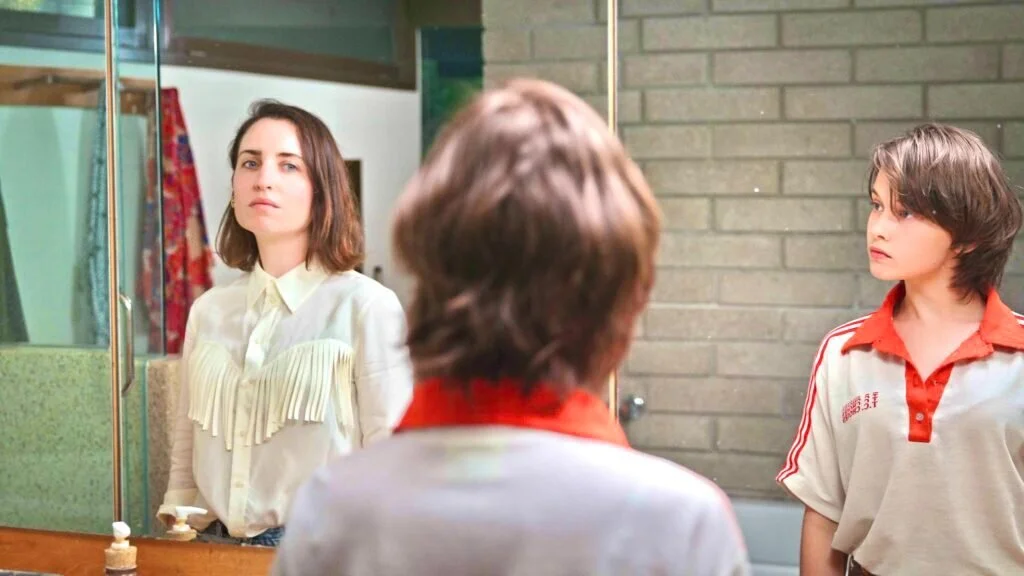Sundance 2021: How it Ends
Daryl Wein and Zoe Lister-Jones' tale of untied loose threads at the hour of the apocalypse is a refreshingly low-key exploration of how the prospect of our own mortality prompts reflection and existential motivation. The two conjure an apocalypse in which we have the safety and time to sit on a porch with friends and neighbors and just talk; which, over the last year has become more fantastical than the idea of a literal end-times. It is certainly of a piece with so many other talky, rambling L.A. pieces in which young adults trying to find satisfaction and direction in life drift aimlessly in a sea of fragmentary connection.
This tale tells the story of Liza (performed by co-writer, co-director, and co-producer, Zoe Lister Jones) as she meanders from house to house over the course of a day meeting old boyfriends, estranged parents, friends, and, occasionally, random strangers. As she does, some meetings go well, others, less so. But the prospect of imminent doom, paradoxically, mellows out all the interactions, providing perspective as unvoiced feelings and long-stewing regret is hashed out in the dull sun of the day. The tale is set up as an After Hours like string of roadblocks as her car is stolen at the outset and she needs to get to a party by the end of the day, but, thankfully, Lister-Jones and Wein avoid that trope and the manic energy it would entail. They keep the story focused squarely on the thing that works so well about it: the exploration of long-bubbling tangled emotions. What distinguishes Wein and Lister-Jones' story from so many others like it is their inclusion of various characters' younger selves. Literal externalizations of the characters' selves walk and talk alongside them. The film is refreshingly casual about their inclusion; there's no over explanation of their origins. It provides a neat foil to explore the ways in which these characters - and Liza in particular (her younger self is played beautifully by Cailee Spainey) - have and haven't matured over the years. And, beyond being a clever conceit on a mechanical level, Spainey and Lister-Jones play beautifully off each other. They balance a fine line between acting like close sisters, one older, one younger, and knowing one another so intimately that their selves become tangled as one; they are versions of one another, separated by time after all.
Appearances from Olivia Wilde, Fred Armisen, Nick Kroll, Helen Hunt, Lamorne Morris, Whitney Cummings, Bradley Whitford, and more ensue. The actors are all fairly well cast such that it generally never seems like the film is just a parade of well-known actors and they all fit the roles they play, even if their moment in the spotlight is fleeting. Visually, however, the film is a bit sterile. The lighting is flat and even - most of it takes place outside, in the soft daylight - and apart from some odd interludes of random people indulging wishes they have been too embarrassed or inhibited to partake of, the film leans far more on its words and performances than its images. It is a shame, because, even within a limited budget and the constraints of the pandemic, more could have been done to emphasize the surreality of the circumstances, especially to contrast against the relative mundanity of the emotional context of the narrative. The rhythm of the images is also a bit flat. Given how much of the movie is dialogue, it settles into a shot-countershot tempo that gets a bit stale by the time the credits role. Liza and younger Liza are shot in a two-shot for most of their meandering between destinations which helps to break up the rhythm a bit. But, the film could have done with some more experimentation with blocking and scenario to keep the images and pacing fresh.
That having been said, if you enjoy the work of any of these actors or if you are looking for a breezy, light bit of existentialism, How it Ends will do the trick. It is charming and the interplay between Spainey and Lister-Jones keeps the film refreshing, even as some of its rhythms become rote. And, there is a well-articulated message to be learned in a film that encourages us to take advantage of the extraordinary and extraordinarily fraught circumstances we find ourselves in to reach out, reconnect, and scrub away as many regrets as we can before we go.







